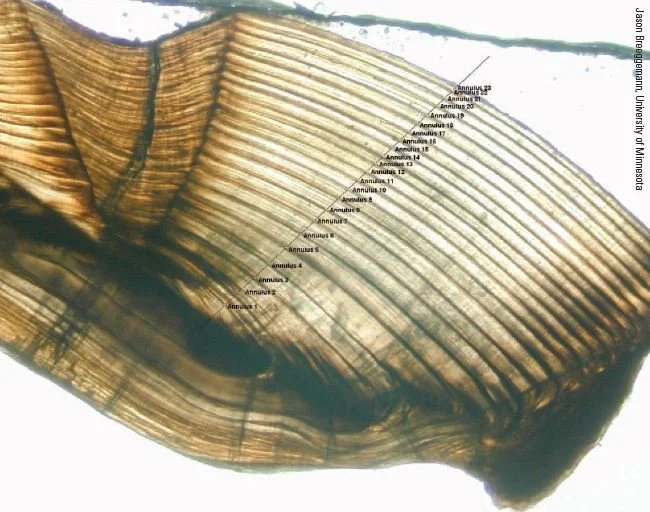Listening in on a Fish’s Life History
An otolith cross-section, showing the annual rings that mark changes in growth. The dark center represents the fish’s time spent in the hatchery, and the lighter outer area marks the time it spent in the lake. Samples taken by laser ablation from different areas of the otolith show the chemical signature of the water where the fish spent each growth period. This particular fish was about 23 years old when it was caught.
On a typical fall day in Ohio, anglers line the banks of rivers like the Vermilion and the Conneaut, looking for that next great catch. Their main target is steelhead trout, a salmon relative native to the Pacific Northwest that has been introduced into Ohio, Pennsylvania, Michigan, and New York rivers to extend the recreational fishing season into the fall and early winter.
Dr. John Farver and Dr. Jeffrey Miner of Bowling Green State University are studying these fish, specifically their otoliths, a small bone that acts as a balancing organ and helps with hearing. Based on chemical elements incorporated into the otolith as the fish grows, the researchers are able to determine with better than 90% accuracy (100% accuracy for Ohio-stocked fish) the state hatchery in which the fish was raised, how much time the fish spent in the river once stocked, and potentially where in the lake it spent most of its life before returning to a stream to breed.
